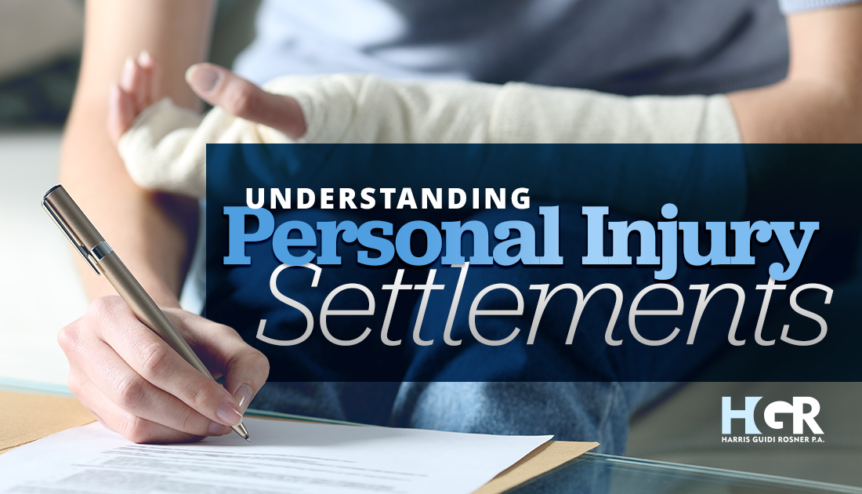According to the U.S. Department of Justice, roughly 97% of personal injury lawsuits never go to trial and are instead settled or dismissed without a trial. Either path comes with its own risks and challenges. Depending on the circumstances of your case, either could be a viable option.
While it is easy enough to assume that a settlement is the course of action with the path of least resistance, your lawyer should still be willing to go to trial if it is truly within your best interests.
The Personal Injury Settlement
A personal injury settlement is a formal resolution formed between two or more parties at odds with one another in some legal or civil manner. This is usually achieved through careful negotiation, reached without the aid of a judge. In simpler terms, it usually means that you agree to accept money in exchange for dropping your action against the parties who caused your injury.
Settlements can be reached at any point during or before the litigation process, as long as it is before the jurors reach a verdict. It is even possible to reach a settlement before a personal injury lawsuit is filed with the State of Florida.
The General Process
Every case is different. Depending on factors such as the number of defendants involved, it may change the process. In general, however, a settlement follows this structure:
- After your injuries are stabilized and the maximum medical recovery or improvement has been achieved, your personal injury lawyer will submit a demand letter that details your injuries and demands a monetary amount covering the damages. A legal argument will also be provided in support of your claim and demand.
- The defendant’s insurance company will respond. This may include a counteroffer or an outright denial of liability.
- Negotiations may begin regarding a settlement. This usually means phone calls or meetings between your lawyers. There might also be some exchange of initial discovery and some pre-trial hearings to resolve minor issues. This will help whittle down the scope of possible issues to be resolved at trial.
If an agreement is reached at this point, a settlement document will be signed with the claimant waiving future liability of the defendant, and the defendant promising to give an agreed-upon amount. Once this has been signed, the defendant is legally obliged to give you the amount you negotiated, and you would no longer be able to sue again in the future for that injury.
The Benefits & Disadvantages of Settlements
In many cases, settlements can be the faster option. Not only can it take months or even years to go to trial, but the trial itself can take even longer depending on the case. Not only that, but you would be taking your chances by going on trial. While plaintiffs do win about 55% of all claims that go to trial, this is still far too close to the 50/50 mark.
However, a settlement may be less than what you deserve, and a trial may be the best way to demonstrate your injuries and obtain the recovery you deserve.
The State of Florida has also created incentives for plaintiffs and defendants to accept reasonable settlements. Florida Statute 768.79 states that if a plaintiff or defendant files an offer to settle that is not accepted, and the plaintiff wins more than 25% of the plaintiff’s settlement offer, or the plaintiff wins by less than 25% of the defendant’s settlement offer, the opposing party may be entitled to recover their fees and costs.
Final Thoughts
Trials and settlements both have their risks and benefits. While a settlement might not give you as much as you hope, it does ensure you that you win something. However, you never want to settle for less than your full injury.
If you’re looking for a personal injury lawyer in Florida to handle your case, call or text us at Harris Guidi Rosner P.A. to schedule your free consultation. We offer legal expertise, unquestioned ethics, and unwavering commitment to our clients.
